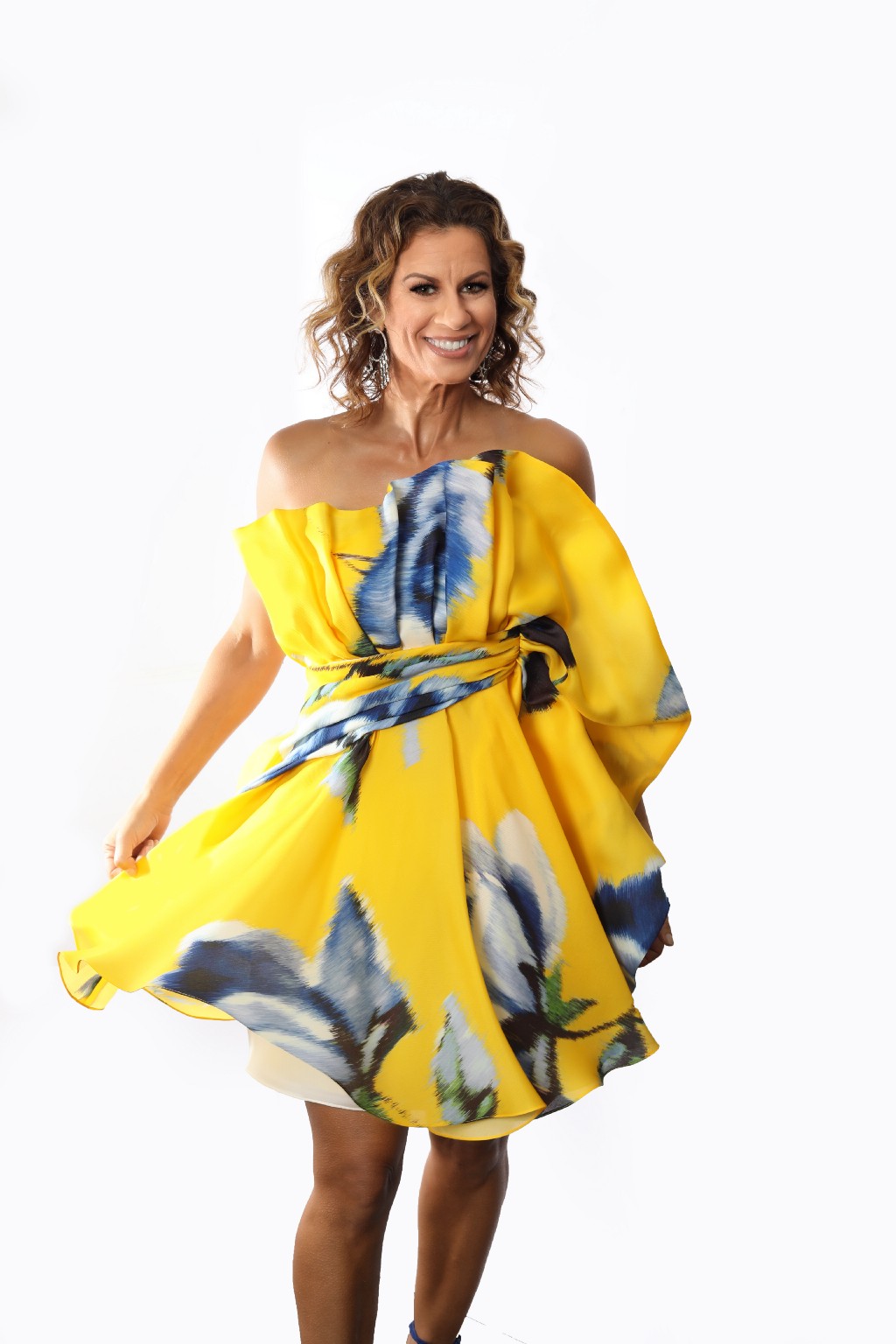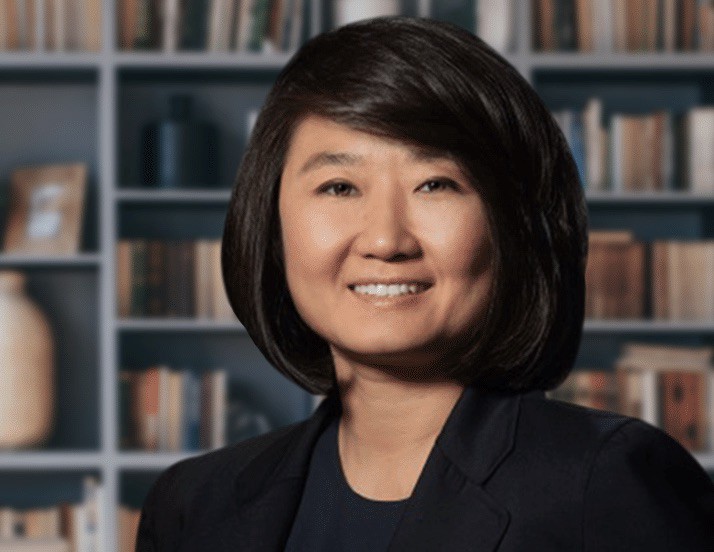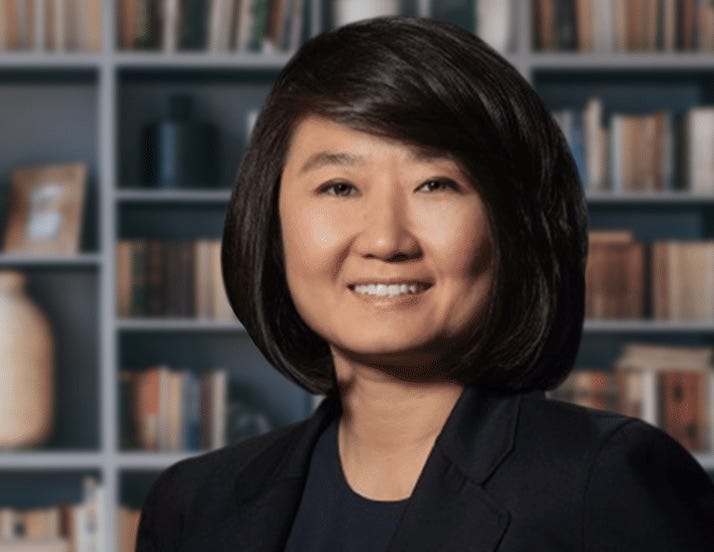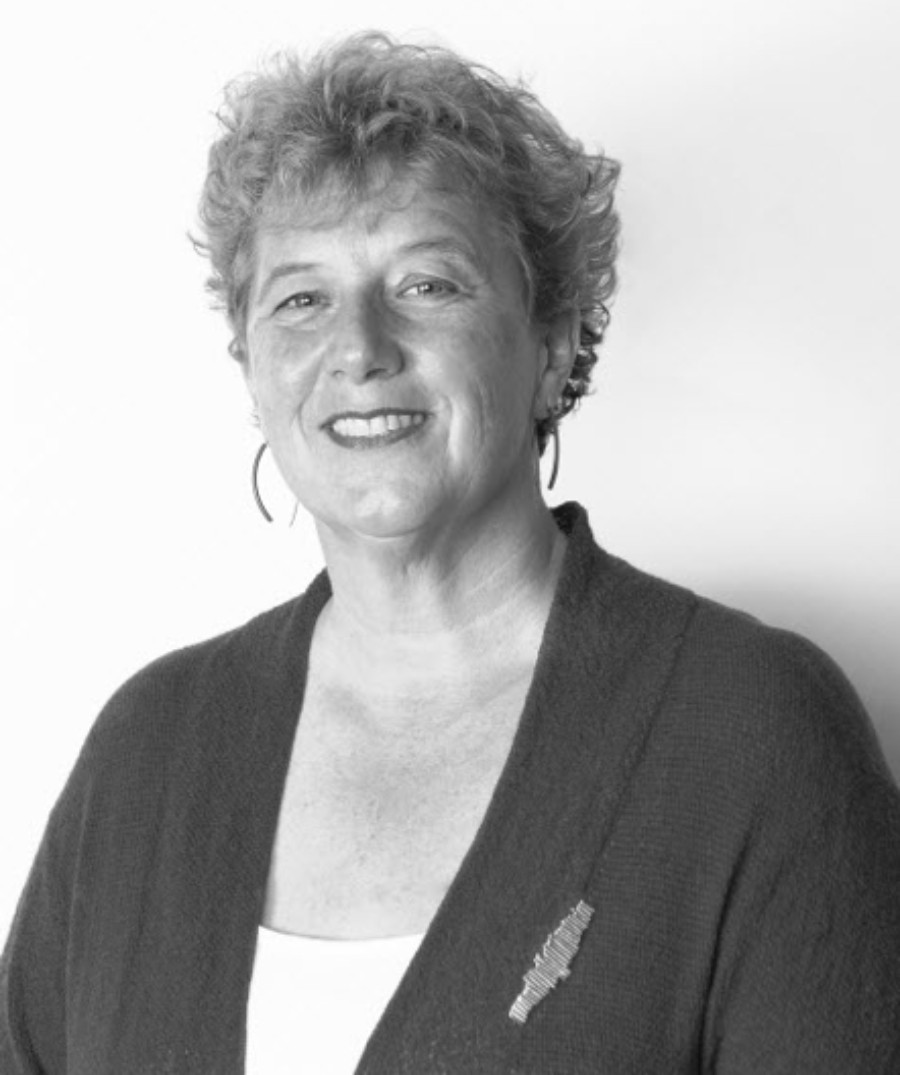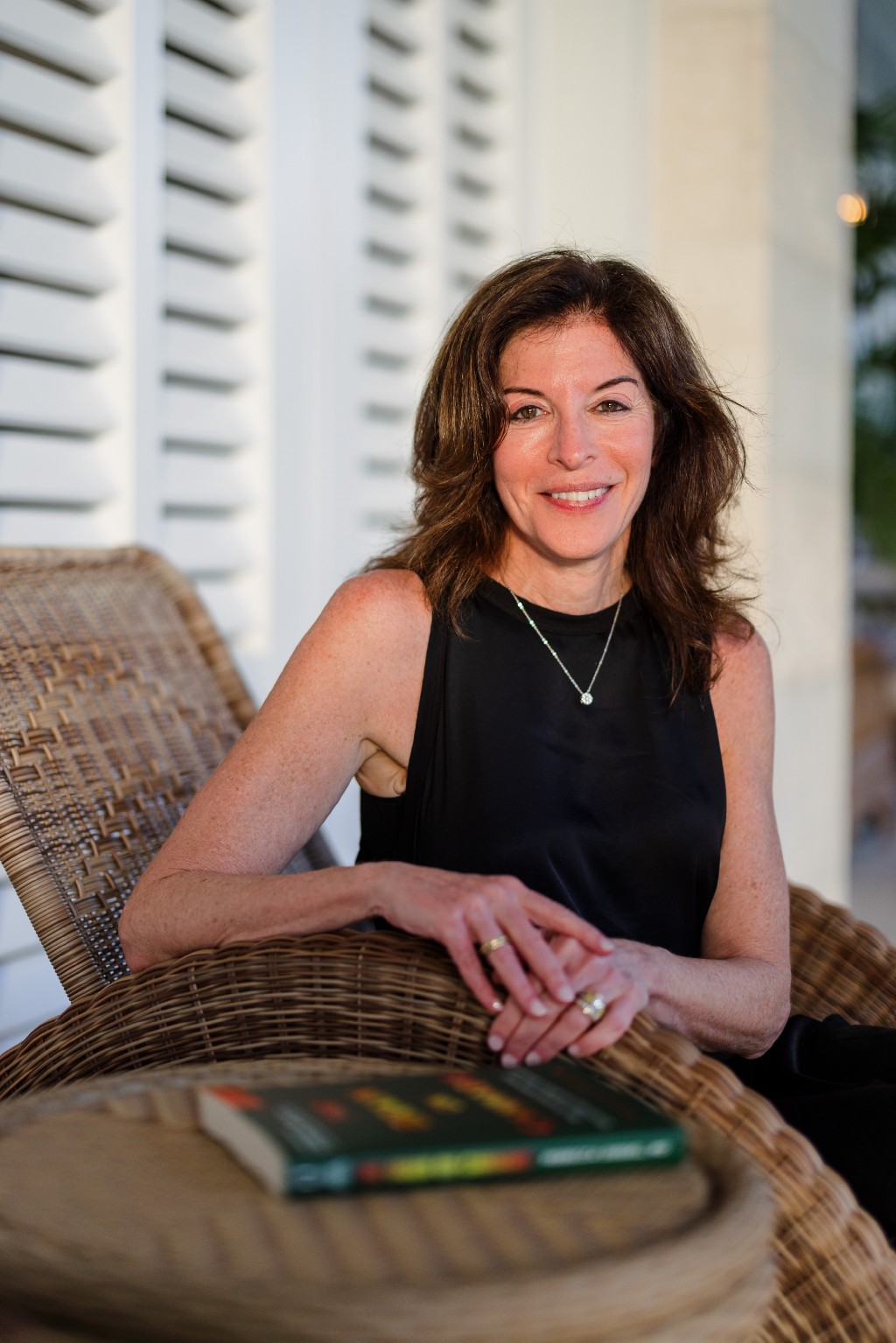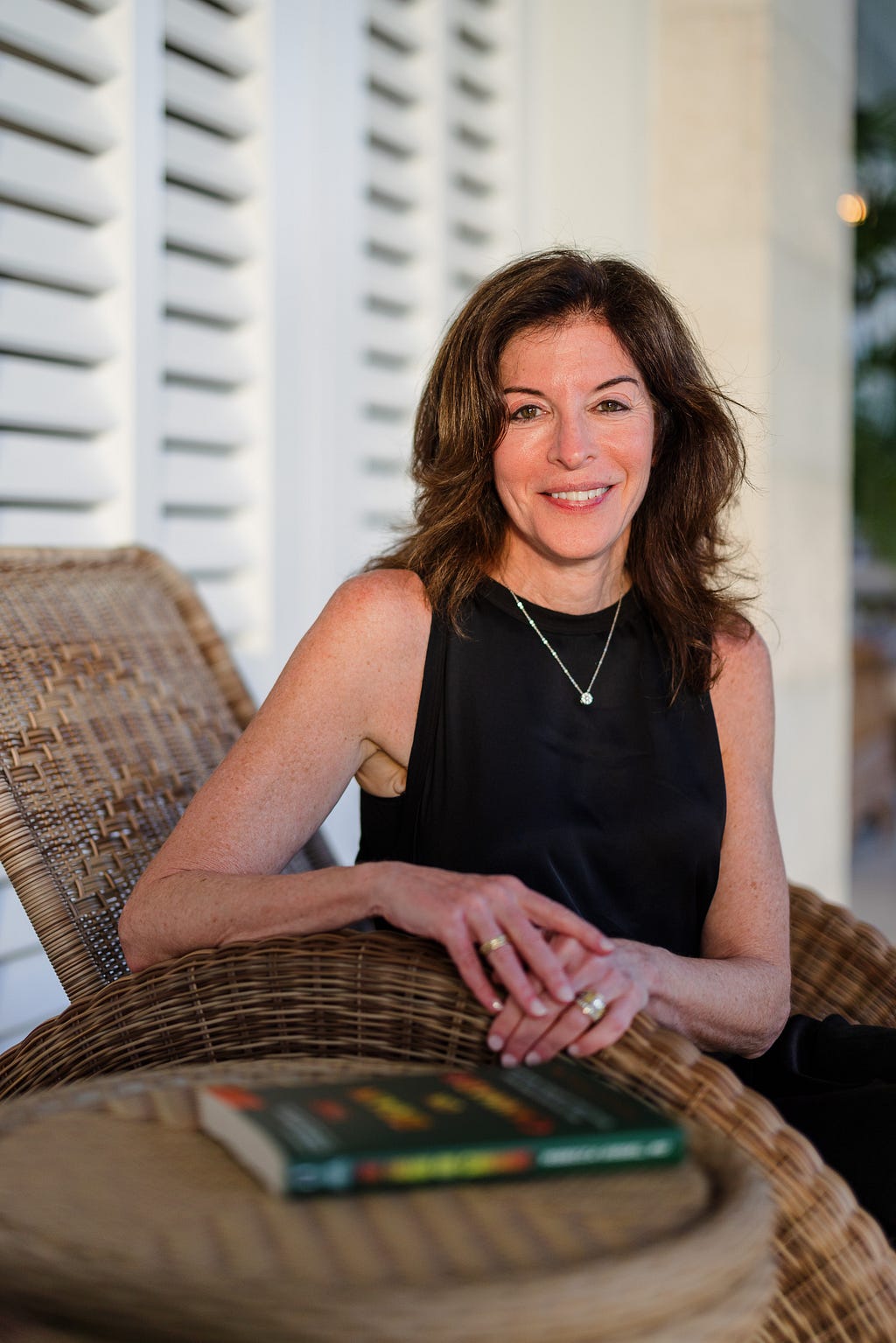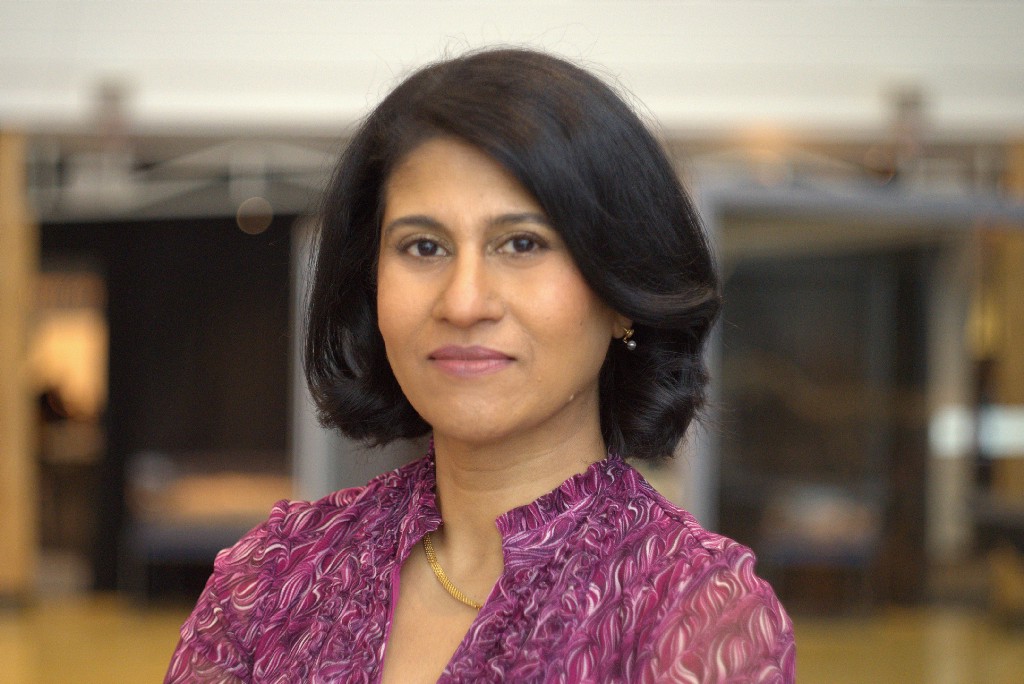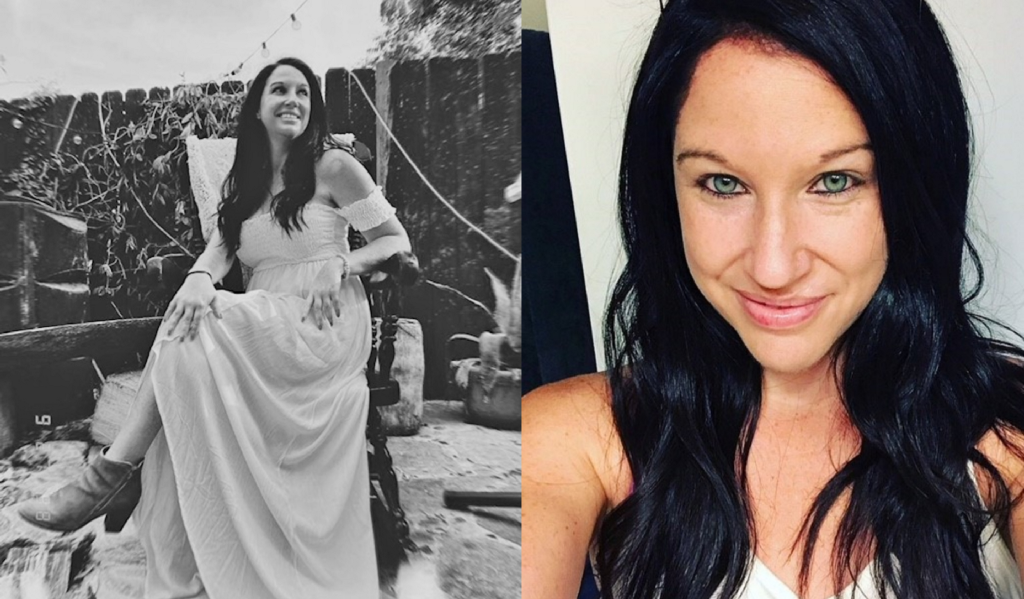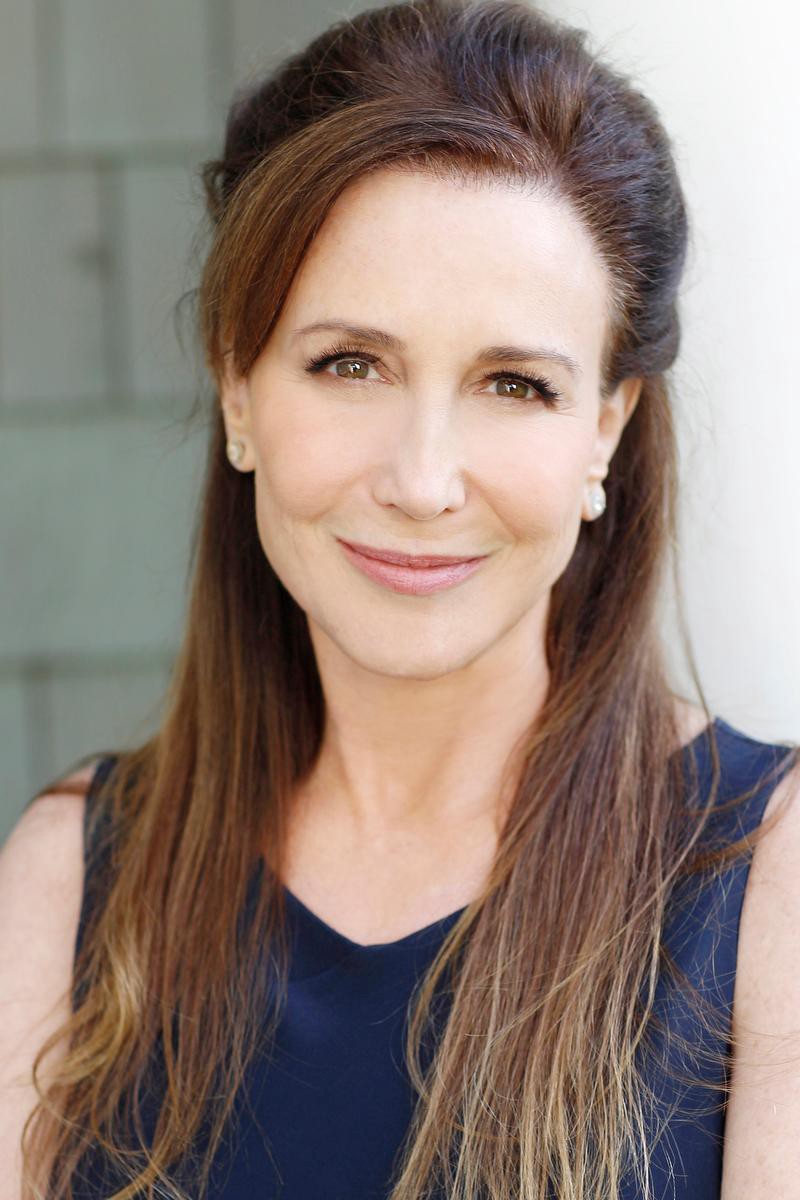An Interview With Candice Georgiadice
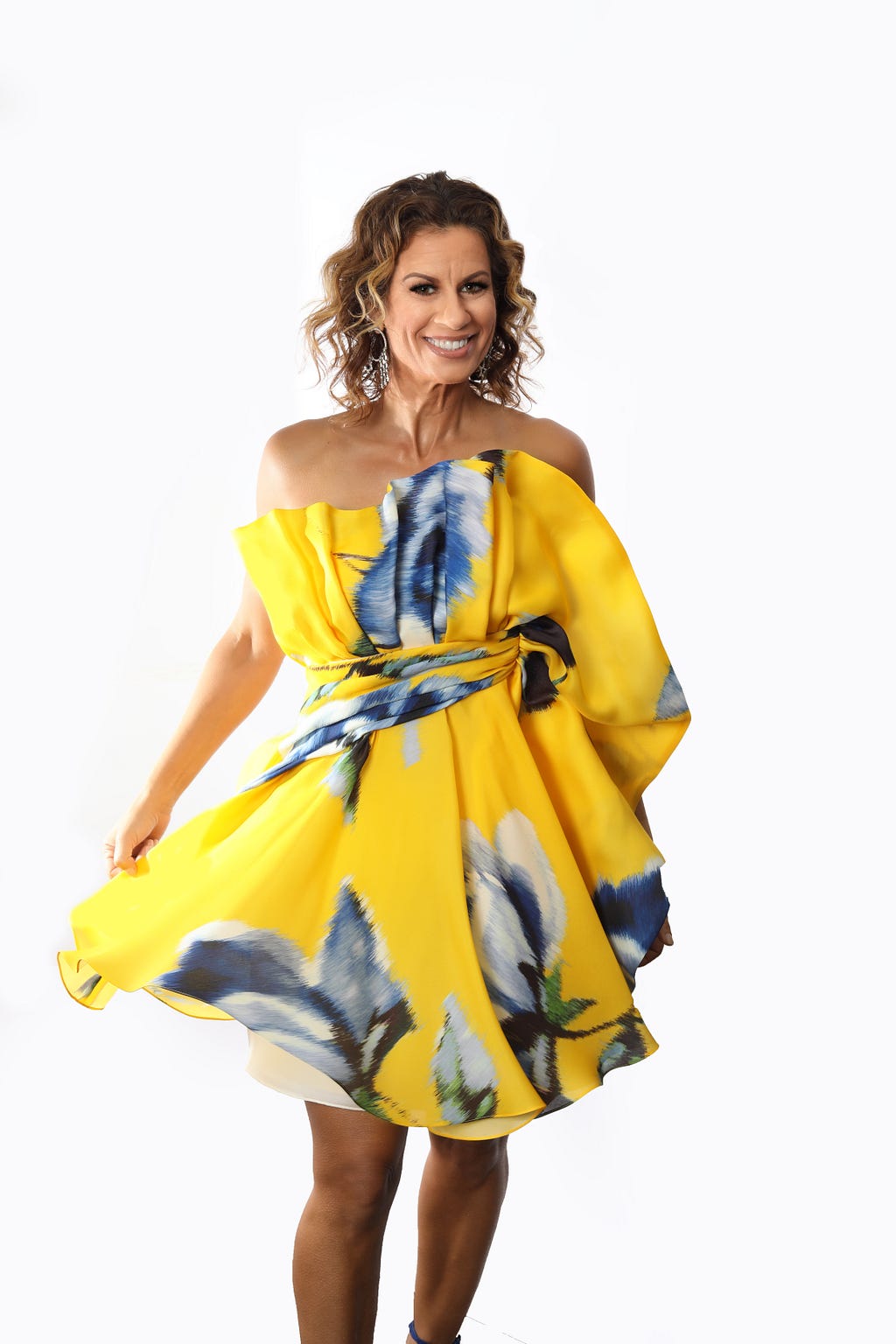
“Let it go” attitude- This is a skill that will always be my top thing to “work on” for myself. Some things will come easier than most. It’s difficult to know when to let things go if they aren’t working in your favor. This could be a vendor, supplier, factory, staff or something that’s supposed to be working for your business. If something is a time, money or energy suck, then let it go and move on. Don’t try to make something work that repeatedly isn’t. Tell yourself the truth and cut the fat.
Many in the fashion industry have been making huge pivots in their business models. Many have turned away from the fast fashion trend. Many have been focusing on fashion that also makes a social impact. Many have turned to sustainable and ethical sourcing. Many have turned to hi tech manufacturing. Many have turned to subscription models. What are the other trends that we will see in the fashion industry? What does it take to lead a successful fashion brand today?
In our series called, “5 Things You Need To Lead a Successful Fashion Brand Today” we are talking to successful leaders of fashion brands who can talk about the Future of Fashion and the 5 things it takes to lead a successful fashion brand in our “new normal.”
As a part of this series I had the distinct pleasure of interviewing Holly Katz.
Holly Katz spent her early life surrounded by fashion in her grandfather’s clothing store and her parent’s women’s retail store. This life experience made a lasting impression on her, shaping an interest in the business and the art of fashion. Katz’s career began with an internship with famed fashion designer, Betsey Johnson, in NYC and for the next seven years exploring the industry from every angle from costing to production to design, which cultivated her understanding of how garments work — how different fabrics, cuts and materials come together to form a beautifully crafted item. During her tenure, Katz earned a degree in fashion design.
From East Coast to West Coast and now in Atlanta, the heart of the South, Holly is on a mission to make personal styling accessible and accepted as the way to express your best self with fashion.
Certified in personal (men and women), corporate and commercial styling, Holly has styled a range of people from suburban moms and young professionals to C-Level executives and celebrities.
Katz is regarded as the top stylist of the South with regular television and speaking appearances. In addition to her personal shopping company, Holly hosts her show, Fashion Crimes Podcast, where she showcases her talents of fashion advice with humor and inspiration.
Thank you so much for doing this with us! Before we dig in, our readers would like to get to know you a bit more. Can you tell us a bit about your childhood “backstory”?
Coming from a long line of clothing retailers, it wasn’t a surprise that my interests from a young age Included fashion and style. My father had a women’s clothing store where my mother started her career. Spanning a career of 40+ years, she is still on the retail floor to this day in womenswear and designer clothing. I really didn’t get into “style” until high school where I started shopping at vintage stores. My love of clothes began, and I started to really care about what I was wearing. Coming from a divorced family, money was anything but plentiful. If I wanted to buy clothes, it had to come from money I made myself. That’s when my love affair for “the mall” started. I worked in clothing stores and loved buying my own clothes. I was a natural when working with people and really enjoyed helping people pick out clothes. But most of all, I loved talking to people and socializing. My true gift was being able to relate to people and problem solving. By listening and helping them select items that they were looking for, I honed my skills in retail and in solving fashion “issues” for people like fit and style.
Can you tell us the story about what led you to this particular career path?
After a few failed career attempts I ended up coming to the realization that the only thing I loved to do was help others achieve great style. How could I do that other than work in retail or become a stylist? What was a stylist, I actually had no idea, but I was determined to find out. In the middle of my 20’s I ended up going back to college for what I really wanted to do; become a fashion designer. Little did I know that getting a degree in fashion design doesn’t guarantee you a job as a designer. I moved to New York City alone, knowing no one, no connections and no job thinking to myself…”I’ll just make friends!” Fortunately for me, I ended up doing every job in fashion but design. The next decade of my life I worked in garment production, costing, assisting the design teams, working with the overseas factories and taking garments from conception to samples. This ‘education’ as I call it is what gives me the knowledge about how clothes are made and constructed. This helps me guide people on what to buy, in addition to bringing a person’s image to life. As most people are confused about shopping and style, people come to someone like me to help them find out the who, what, when and where of the person they are today, in the body they have today. From my experience as a personal stylist, I have since graduated to hosting my own podcast “Fashion Crimes” where I style people over the mic with tips, tricks and introduce new brands to my audience. I am the best friend you never knew you needed in fashion. You can work with me as a stylist, or listen to me on my podcast give fashion advice to people who want help.
Can you share the most interesting story that happened to you since you began your career?
The most interesting story is how I started my career as a podcaster. My girlfriend who owns a podcasting company for women called me one day and said, “You’re loud. You’re bossy. You should start a podcast.” I never considered this an endearing part of my personality, however, now I am capitalizing on these very skills. I didn’t know people would care about my take on fashion after 40…and I mean way after 40, but here I am manifesting my career as a fashion industry leader and style expert. I didn’t know the first thing about podcasting, and I just jumped in. I think I had listened to maybe one or two podcasts in my life up to this point. Almost two years later and just shy of 100 episodes, I’m still going strong.
You are a successful business leader. Which three character traits do you think were most instrumental to your success? Can you please share a story or example for each?
Perseverance: This is not giving up. Ever. This is one of the hardest things I think for someone to do. Pick a subject that keeps you up at night. What does the world need in your opinion? It could be something small, that might lead to something else. Don’t think you have to conquer the social media algorithms or have the next, newest thing. It’s something that’s in the core of your soul that you can’t ignore. Find the balance of being authentic to yourself and your beliefs with a little bending room in order to sell or get your idea to a wider audience.
Ability to pivot: Putting your ego aside if something isn’t working and learning how to nurture something else that is. A clear example of this: Me as a stylist and me as a podcaster. I was pushing my styling business, wanting so badly to get clients; not understanding why people weren’t rushing to hire me. While I had a few clients and still do, that’s not all that I can do. I can help people on a bigger scale. People hire me because they know me. The quickest way for them to get to know and trust me? Through my podcast. If they hire me, great, if they don’t, I still win, because now they are part of my network. They are listening and learning. This is the goal. I have learned to chase purpose, not money. If you can afford to do this, then you can pursue your creative goals. If money is what you need, get a full-time job to live, and use your creativity to create a side hustle. There is no shame in being realistic about your financial needs while still trying to feed your creative soul.
REALLY believing in yourself…not just saying you do: You can say this all day, but if you really don’t believe is what you’re doing, then you’re wasting your time. This is the time to get brutally, harshly honest with yourself. Brutal. If you truly believe in what you are doing, you will succeed. Disclaimer: Success looks different for everyone. When I say success, I don’t necessarily mean monetary success. It might be brand recognition or creating relationships with people in your industry. There are all different views of success. I know that there are people out there who value my knowledge and opinion. It is my duty to share my gifts with the world. Whoever wants to tune in, can. My particular goal is to have it turn into something bigger…maybe a book or television show possibly a product line. I would love be a paid public speaker or professional interviewer. Everything I put into my goals will lead me to the next step. This is universal law. Whatever you believe will happen, will.
What do you think makes your company stand out? Can you share a story?
As a personal stylist in the south, the same problem kept coming up with all of my clients. There is NO voice of fashion or style expert for women in their 40’s and over. I have become that voice. People are clueless about what to wear, how much to spend, and how to dress for the body they have today. They are completely grasping at straws, wearing what everyone else wears and feeling mediocre at best. The common thread is this: people see celebrities on television and think that is the benchmark for having good style. This couldn’t be further from the truth. Having good style doesn’t mean wearing expensive clothes. You are either born with the “fashion gene” or not. If not, it can be LEARNED. My biggest complaints from clients: I hate shopping, I hate shopping, I hate shopping. People hate shopping because they don’t know what they’re looking for. With my experience in the fashion industry in garment construction, I know how clothes are made. I know why something is priced at $40 or $400. I can guide someone even through a podcast on how to dress with intention for their age, industry and lifestyle. That’s what makes my podcast better than any other fashion podcast out there.
Do you have a favorite “Life Lesson Quote”? Can you share a story of how that was relevant to you in your life?
The only quotes I live by:
“Under promise and over deliver.”
I constantly am doing this with my clients. I always treat my customers the way I would want to be treated. Giving them more than they ask for, going over scheduled time, delivering items or picking up and dropping off for a client is overdelivering. I recommend other vendors and connect clients to people to further their experience with me.
“Surprise & delight” — Lauren Messiah
I am available by text and phone for questions and I get a lot of them. I never charge for extra help if it’s just a question. Give surprise gifts, take extra pictures, recommend another service or person to help them along their style journey. I have a referral program which always surprises and delights people. They are rewarded if they refer me. I send free content every week without asking for anything in return.
“Do what you say and say what you do”
Tell the truth. Period. If you can’t keep a deadline, or need to switch a schedule, then tell the truth. You will be more respected in the long run. If you go back on a promise, then explain why and offer another solution. Own up to your mistakes.
Ok, thank you for that. Let’s now jump to the primary focus of our interview. Do you see any fascinating developments emerging over the next few years in the fashion industry that you are excited about? Can you tell us about that?
Companies are really trying to qualify their product as sustainable. The consumer has spoken. With the global climate crisis people really care about fair wages and where the product is produced, how it’s shipped and the factories where the goods are made. There are hundreds of small companies that are producing in small batches and producing locally. I am happy that most (not all) are taking fabric overflow and waste and finding a way to use it. It’s not a perfect system but it’s just the beginning. It’s hip to be environmentally conscious. The customers dig it and want to be a part of it. It creates brand loyalty and awareness and more companies are jumping on board by the day.
Can you share how your brand is helping to bring goodness to the world?
I am like a therapist; literally. That’s why I call myself a style coach. I am the voice representing fashion and style for my age group and getting people off the sidelines, back in the game of participating in life. Anxiety and depression are the number one factors of why people give up on their image. They think it doesn’t matter for a variety of reasons. I will not rest until I create a movement that shows consumers that what you wear does matter, for your mental health at the very least. While everyday isn’t a home run, I motivate you to keep moving forward by getting you “unstuck” and show you how to evolve your style with your age.
Can you share with our readers about the ethical standards you use when you choose where to source materials?
When I work with clients, I assess their individual needs. According to their budget and what clothing their lifestyle calls for, I try my best to source from ethical brands that do the least amount of damage to the planet when producing their products. While this plan isn’t 100% full proof for each client, I try my best to buy from small brands, support small business owners and shop local. Most people I work with have the same problem; they hate shopping or they have no idea how to shop. We break these barriers down by taking very small bites and showing them how to get the best product that fits their body, while staying within their budget. Discovering newer, small brands brings new designers into the spotlight for my customers. It’s my job to guide them in a direction that will benefit them in addition to my network of small brands that appreciate the business so much.
Fast fashion has an advantage, that it is affordable for most people, but it also has the drawback that it does not last very long and is therefore not very sustainable. What are your thoughts about this? How does your company address this question?
Fast fashion isn’t your friend. Think about it like fast food. It’s affordable, yes, but the long-term effects are hurting the environment and your health, in addition to your wallet. These huge conglomerates care about one thing, and that’s the fraction of a penny they can save to make a profit, pay factory workers less than their worth and deliver hundreds of thousands of units one day faster. The public has spoken, and the consumer now is demanding to know how these garments are produced and that the factory employees have a place to use the restroom, aren’t slaving in unbearable conditions and are paid a fair wage. I personally have relationships with sustainable brands that are doing exactly this, and this is who I support. I am constantly working to find smaller, newer brands that can produce in small batches that aren’t hurting the environment and that want to bring great product to the market. We did a huge Earth Day episode where I talked about the sustainable brands that stuck out to me and how we can become more eco-conscious consumers. I will continue to support these efforts to bring awareness and education to my listeners.
Thank you for all that. Here is the main question of our interview. What are your “5 Things You Need To Lead a Successful Fashion Brand”. Please share a story or example for each.
In fashion you really need these skills more than anything:
Perseverance- Be pleasantly persistent. If you are manufacturing and selling a product, to get factories to even take a meeting with you will be very difficult. If you believe in your product and you believe there’s place in the market for it, some factory will give you a chance. It’s going to take a lot of research and a lot of nos to get to that final yes. Speak to other people that are making something similar to you. If you don’t have a physical product and you’re selling a service, remember this: people are buying you, in addition to your services. You have to figure out the pain points of why someone would need your service and go from there. Be relatable and put yourself in their shoes. No one is going to buy from you if they don’t like your sales approach. People find comfort in buying from people they like and trust.
“Let it go” attitude- This is a skill that will always be my top thing to “work on” for myself. Some things will come easier than most. It’s difficult to know when to let things go if they aren’t working in your favor. This could be a vendor, supplier, factory, staff or something that’s supposed to be working for your business. If something is a time, money or energy suck, then let it go and move on. Don’t try to make something work that repeatedly isn’t. Tell yourself the truth and cut the fat.
Who is your customer?- Pick a customer you want to market to and stick with it. For example, your ideal client could be a busy working moms that are CEO’s and higher positions. Ask yourself these questions:
What do they need?
What are their biggest pain points?
What makes you think they need your product or services?
How can you make your product/service important to them?
How can you get their attention?
What is their budget for something like this?
What problem is your product/service going to solve for them?
What people already selling your product are doing- “Steal from the best and make it your own”. I didn’t say this but someone in advertising did. Figure out who is doing what you want to do and look at how they are doing it. Figure out how your products/services are different and how you can stand out from the rest. If the market is crowded or oversaturated with the same product you want to produce, you have to figure out why yours is better. This isn’t a rushed decision. Some people take years to figure out why their product is better. What can you offer that others aren’t? What can you do to reach a wider audience? What makes your product unique? Is your price competitive? See if you can speak to someone in exchange for something so you can get some real help. Hire a business coach. Never stop learning what is working for the existing product and what isn’t.
How to follow current marketing trends — The world is everchanging in marketing and especially social media. Go with the flow and figure out what’s working for others doing the same thing as you. Learn how to market yourself but know when it’s time in your career to get some help. There are great ways to start out small, like with a Virtual Assistant company that works for a little less. Find a college graduate or someone more knowledgeable than you about marketing who can be a second set of eyes on what you’re doing right and wrong. Engagement is gold. Make sure you are liking and commenting on others and hopefully people will reciprocate. Never. Stop. Learning. Don’t be in such a hurry to get things perfect. Allow yourself some grace to get in front of the right people. If it’s meant to be, it will be. You cannot force success.
Every industry constantly evolves and seeks improvement. How do you think the fashion industry can improve itself? Can you give an example?
Education. Educate people about your product because most need the help. Education leads to brand loyalty. Why are people so confused about what to wear? Why do people hate shopping? Because they have no idea how to shop anymore. Show people why your brand is better. There are millions of clothing and accessory options. Why should people buy from you? There is a lost art of customer service in department stores and large markets. To me, there is a disconnection between the product and customer. Most people have no idea how to shop or what they should be shopping for, how to dress for their body type or how to have your style evolve with your age. This is what the people in the stores should be doing instead of just ringing people up and locating merchandise.
You are a person of great influence. If you could start a movement that would bring the most amount of good to the most amount of people, what would that be? You never know what your idea can trigger. 🙂
It is my life’s work to stop bad fashion in the world and to get people to dress with intention. I am constantly working to get people to realize that fashion does apply to them and they can’t just “opt out”. This is something that you can do today, right this minute to change how you feel about yourself. The most common misconception is this: You have to be thin, wealthy and wear expensive designer clothes to have good style. The truth is this: Anyone of any size, age or budget can have fabulous style if you put in just a little effort. Great style is available to anyone if the seek to find it. If you don’t know where to start, start by listening to my podcast and pick a subject you want to learn about. Start small. Clean out your closet and organize it. Figure out what you need the most. Is your image holding you back? For most people, the answer is yes. You can hire a professional personal stylist like me or you can shop yourself. Start somewhere, but just start. After all, I am the best friend you never knew you needed in fashion.
How can our readers further follow your work online?
IG: fashioncrimespodcast
YT: Fashion Crimes Podcast
FB: Fashion Crimes Podcast
IG: hollykatzstyling
FB: Holly Katz Styling
YT: Holly Katz Styling
TT: hollykatzstyling
Thank you for these fantastic insights. We greatly appreciate the time you spent on this.
Modern Fashion: Holly Katz On The 5 Things You Need To Lead a Successful Fashion Brand Today was originally published in Authority Magazine on Medium, where people are continuing the conversation by highlighting and responding to this story.

